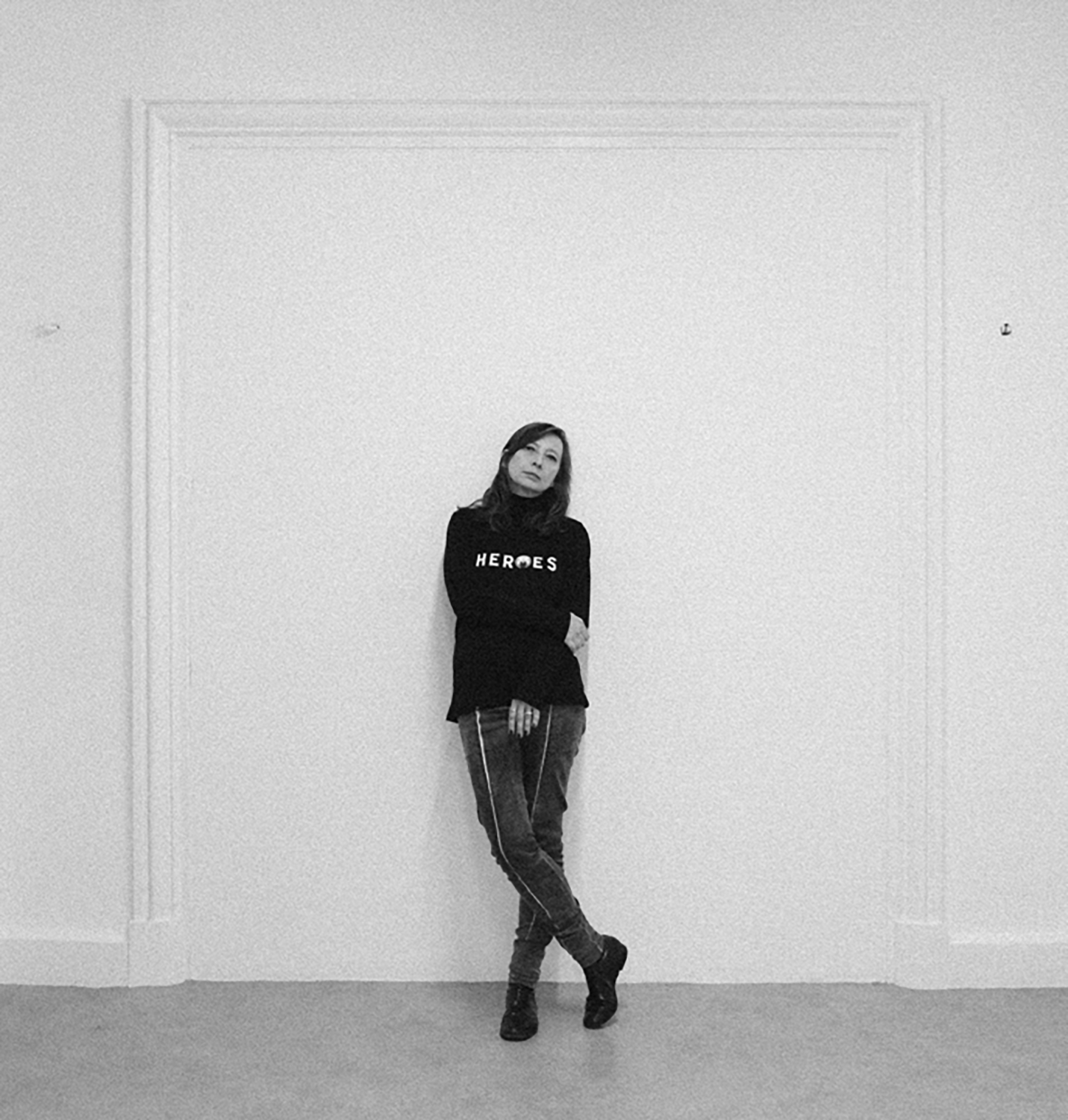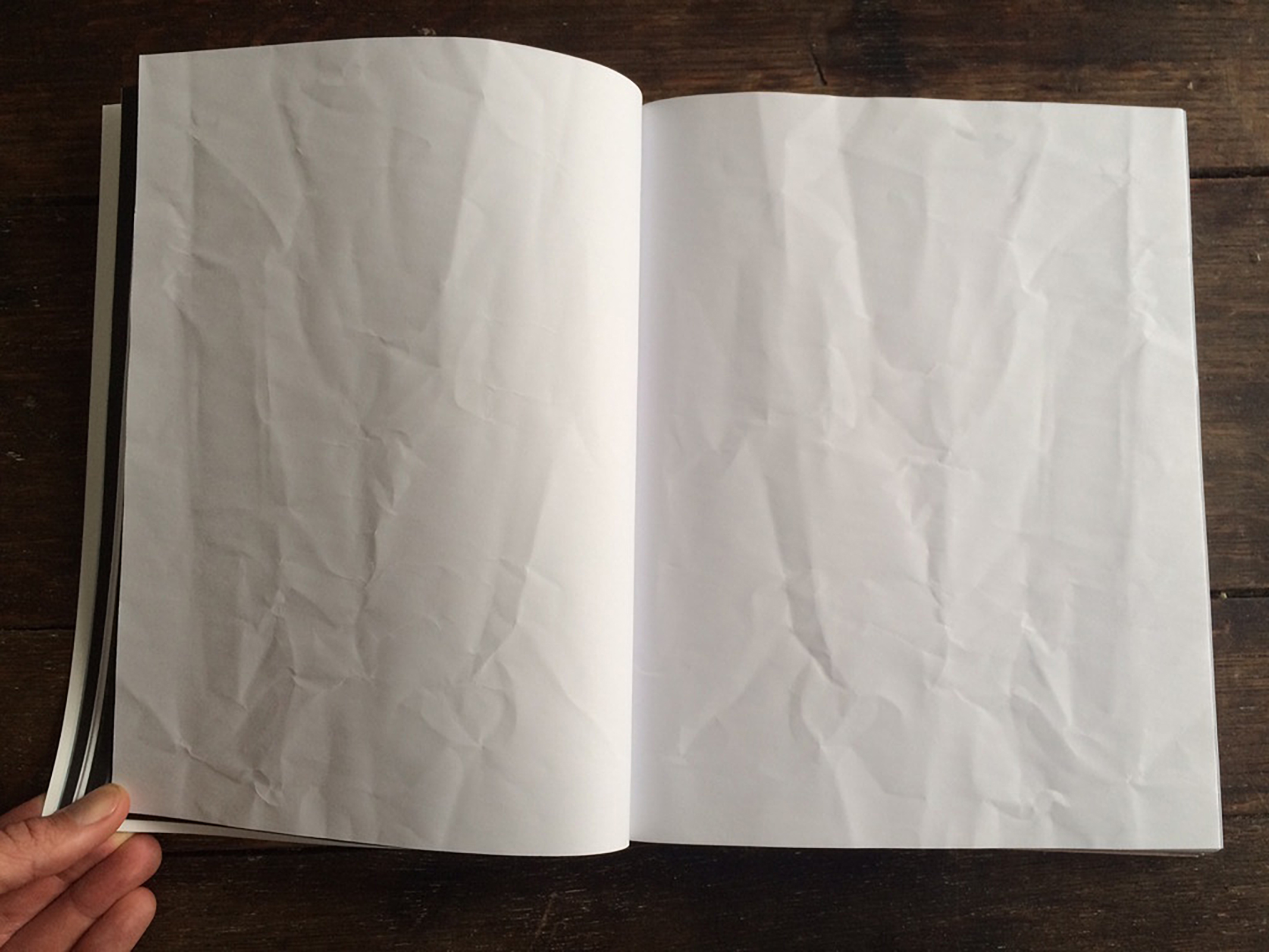
Photo: Ada Yu
Geraldine Postel is a purveyor of ideas. Through her company Outcasts Incorporated, Geraldine has operated in the realms of media direction for top art and fashion titles, independent book publishing, and installation production, including a series of “Ideal Offices” as envisioned by artists, writers, and interior designers. Recently, she has initiated a more traditional gallery program under the Outcasts Incorporated aegis at her space in Le Marais, with exhibitions by Paul Mouginot, Devon Dikeou, Thomas Lelu, Les Kebadian, Larry Clark & Eugene Ricconeaus, and Laurent Saksik, among others. On top of all this, Geraldine is at work on a novel that digs into her past to fetch memories of accidents of youth—both those that are happenstance, and those we provoke. Fortunately, she found the time to conceive a cerebral yet tactile and pointedly personal project for zing #24, “The Intimidation of a Blank Page”.
Interview by Brandon Johnson
Your project is probably the most conceptual of all in this issue. How did you conceive of the idea?
In 2014 I was at the height of a serious illness. I was poisoned by pharmaceutical treatment. It was impossible to concentrate or to get anything done, or even to just accept my condition. It was unbearable. This is when I got the idea for “The Intimidation of the Blank Page”. It initially came from the frustration of this state of being, the feelings of numbness I endured along with memory failure, a long period of disenchantment and depression. It was early August in Paris, and I had been struggling with the writing of my novel for five years. The wrinkled signature project went through several phases, but then I decided to run it all white, as the title indicates “The Intimidation of a Blank Page”. I remember that Devon [Dikeou] preferred that as well.
The project engages very closely with the material and production aspects of the magazine. Can we attribute this to your background working in publishing industry?
Evidently, I’ve had a relationship with magazines since birth. My great-grandfather had published an almanac each year during the 1920s. I suppose that my heritage in print and love for books comes from this part of my family. To arrive at this idea of blank pages and to give them a wrinkled aspect was a really fun challenge. It suddenly became my goal to make a 3-D project in a 2-D publication. How feasible it would be to do as an insert, and so on. Yes, it must be intrinsic to my relationship with magazines, my quest for the new, the creative, and the different in publishing—similar to what I have always done with Outcasts Incorporated. I love and also hate this project for the same reasons—the freedom, the message (or non-message), the consumerism, the waste of paper, the circulation, the way people can rely on pages and spreads (or not). From laughter to boredom, rage, surprise, and even disgust sometimes, you have the chance to find something in a publication that blows your mind or triggers something positive in you. If that happens, you’ll close it and say, “Hey! That’s a great magazine!” But that’s rare. Not to be flattering, as I have been involved with this project [zingmagazine] of Devon’s since 1995, but that is still the way I feel about zingmagazine. It’s always a great surprise to receive it, and there’s always great stuff that will reinforce my idea that it stands as the best pure art magazine of the last two decades.
The “intimidation of a blank page” seems to imply that there’s anxiety present in the act of creation. Do you feel this is true?
Hell yes. I am so full of images after all these years of constantly studying visual references. I was trying to propose something different and personal, something daring that plays on notions of the relationship to inspiration, creativity, the predisposition to do things or not. All our psycho moods relentlessly transporting us through the spectrum of emotions, along with everything else that interferes with our creative needs. Another big part is ego. I was really frustrated and wanted to do something creative.

It’s a daring act to present a project of blank pages! Does this at all speak to how the reader/viewer tends to project their own inner concerns or ideas upon a work of art?
I consider all new encounters—readers, passersby, and viewers—to be like a blank canvas in the first process of receiving images. The reader receives it, then processes it, and their emotions, experience, and knowledge will eventually give them an intuitive or conceptual answer as to whether they like it or not. It might also seem a bit humorous. In fact, that’s part of the intent—a sense of humor that should be taken seriously. I think that humor has a lot of truth in it. One should laugh at oneself more often to counterpoint our certainties and self-entitlement. With this curatorial section in zingmagazine that was generously offered to me, I acted upon that feeling. It became, “Oh yes! Let me communicate this feeling of searching for oneself in a cluttered world of images and words, when confusion takes over.” On the other hand, I hope people find pages on which to meditate upon the beauty of the random creases and whiteness of the landscapes, the feel of the volume of the paper, the ephemeral, the subtle hurricanes passing by. Yet, I have to add that in spite of how beautiful and proud I am of this section, I need to say that I also feel bad. I have a moral conflict about the use of trees—paper waste—because that matters to me. So many useless, ugly, and odious magazines are distributed in the world! What a waste of paper! What I do know is that I am not selling anything here with that piece. I am only communicating ideas. So looking at the project now, with your questions in mind, I also have these mixed feelings about myself—like facing a mirror of my own vanity, denunciations, and failures! Yet the project still stands out because it says many things without using words. That’s another dichotomy very intrinsic to my personality, which relates to this title. I need a bit more wisdom and self control. Let’s hope that will come with age and more of this kind of experience . . .
Despite the ambivalence you’re expressing, I’ve been witness to many positive responses to your project in particular. The moral dilemma of creating something worthy when using a material like paper is understandable as we become more conscious of our use of natural resources, but perhaps that’s the very reason why you have created a project that can only really exist in this medium?
If I had the proper time, support, and space (along with many other “ifs”) I could attempt to realize creative concepts in many other different mediums, and it would never be the same. Indeed, this section is dedicated to zingmagazine. I had a great time, it took my mind out of burden for a little while, it looks great, and I am just as glad to be able to discuss this with you today. My projects usually start with many wrinkled papers, so let’s call it a new beginning!